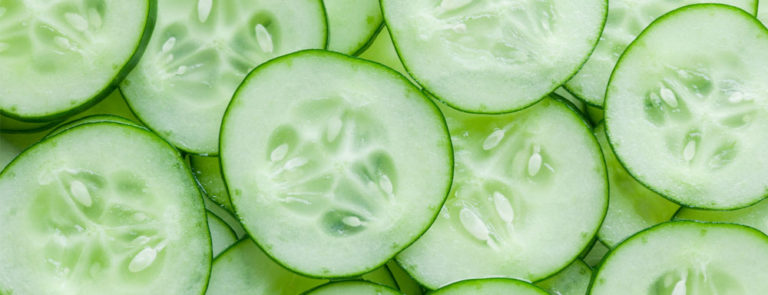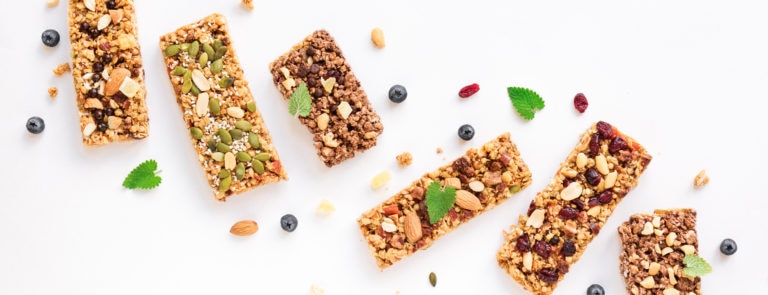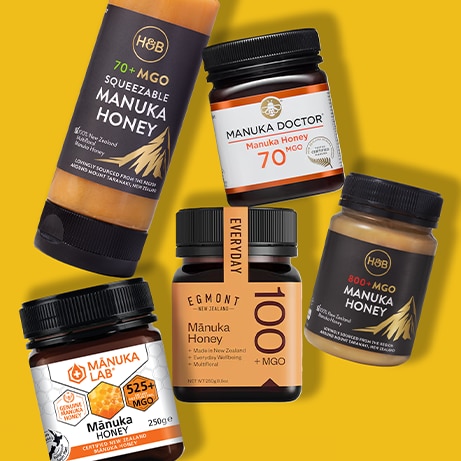15% off £25 or 20% off £35
Code:BASKET
Your essential guide to silica: uses, benefits and side effects

Ever heard of silica? This natural compound may be a lesser-known supplement powerhouse – keep reading to find out everything you need to know
Summary
1What’s silica?
Silica is a natural compound made up of the two most common elements in the Earth’s crust – oxygen and silicon…
2What are the possible benefits of silica?
Growing evidence suggests that silica’s an important trace element for our health, although scientists don’t entirely understand its role in the body.
3What are the sources of silica?
Dietary sources of silica are largely found in plant-based foods…
Silica, or silicon dioxide, is a major component of granite, sand, quartz and other types of rocks, meaning it’s found all around us in nature.1,2 So why are some people taking it as a dietary supplement...?
What is silica?
Silica is a natural compound made up of the two most common elements in the Earth’s crust – oxygen and silicon.1,2
You’ll find it in everything from glass to concrete, and it also naturally occurs in many foods such as fruits, vegetables, cereals and mineral water.3
In short, silica is everywhere – but can it really benefit your health?

What are the possible benefits of silica?
Growing evidence suggests that silica is an important trace element for our health, although scientists don’t entirely understand its role in the body.4,5
Some people take silica as a dietary supplement in the belief that it can strengthen their bones and support hair, skin and nail health. But what does the research say?
Let’s dive deeper to find out more…
There’s growing evidence that silica may play a key role in bone formation and maintenance. This may be due to its role in bone mineralisation, the process by which minerals are deposited into the bone matrix (a strong mix of flexible fibres and hard minerals in your bones that helps them stay tough but not too brittle) to trigger growth.6
Several studies have suggested a link between higher dietary silica intake and better bone mineral density, although the exact mechanism of this relationship has yet to be discovered and further research is needed to confirm whether silica helps with bone formation.7,8
Nicknamed the ‘beauty mineral’, silica has inspired interest because of its potential role in assisting collagen production.9,10 Collagen is needed to keep skin springy and elastic and provides protection and structure to your organs and joints.11
In one study of women with sun-damaged skin, those who took 10mg of a more bioavailable form of silica daily for 20 weeks had a significant positive effect on their skin surface as well as less brittle hair and nails compared to the placebo group.12
Another study of women with fine hair found that those participants who took a more bioavailable form of silica supplement for nine months experienced thicker hair and fewer breakages compared to those who took a placebo.13
Despite these promising results, much more research is needed to validate the health and beauty claims of silica because many studies have been small, as well as to determine the safety and bioavailability of silica dietary supplements.9
What are the sources of silica?
Dietary sources of silica are largely found in plant-based foods.3,4 Some good sources of silica include:3,4
- unrefined grains
- cereal products
- fruits
- vegetables (particularly green beans and leafy greens)
- mineral water
- beer
Silica is also available as a dietary supplement. Silica supplements are derived from water-soluble forms of silica that are found in the horsetail plant and bamboo.
Horsetail is a herbal remedy that has been used traditionally for osteoporosis and as a diuretic to help with fluid retention, but few studies have looked at the effects of the horsetail herb in humans.14,15
How much silica should you get?
Currently, there’s no recommended minimum daily silica intake.10 Nor is there a recommended upper limit due to the lack of data indicating any toxic effects of silica supplementation.8
Despite the lack of any official guidelines around silica intake, one study suggests that 25mg per day would be a reasonable recommendation based on the existing animal and human studies.5
Given the lack of evidence around its safety and recommended daily intake, silica supplements should be avoided by vulnerable groups, such as:16,17,18
- children (as horsetail contains traces of nicotine)
- pregnant women
- people with kidney disease (if the kidneys can’t excrete excess silica, it may accumulate in the bloodstream)
Are there side effects of taking silica?
There are no known symptoms of either deficiency or excess of silica from dietary sources.5 Research suggests that silica supplements are well tolerated in healthy people and don’t cause any major side effects, but more human studies are needed.19
The horsetail herb may cause the following side effects:19,20
- allergic reactions – for example, rash and swelling of the face
- upset stomach
- hypoglycaemia in people with type 2 diabetes
It’s always best to check with your GP before starting any new supplements, especially if you have a long-term condition or take any medication.
The final say
Silica, or silicon dioxide, is a natural compound that’s found in our food, in the Earth’s crust and in commercial and industrial materials.2,3 So it’s pretty versatile!
There’s some evidence that silica is an important trace mineral that may help strengthen bones and improve collagen production (you can learn more about collagen in our ultimate guide). But more studies are needed to understand silica’s role in the body.4-9
Silica can be taken as a dietary supplement, but it’s important to speak to your healthcare professional before starting supplementation, as there’s little scientific evidence around its safety and toxicity.
The advice in this article is for information only and should not replace medical care. Please check with your GP or healthcare professional before trying any supplements, treatments or remedies. Food supplements must not be used as a substitute for a varied and balanced diet and a healthy lifestyle.
Please note scientific evidence for this topic is very limited and although there are emerging studies, more clinical research needs to be conducted. Please speak to your GP before taking any new products.
- NIH National Center for Biotechnology Information. Silicon dioxide [Internet]. [cited 2024 Aug 5]. Available from: https://pubchem.ncbi.nlm.nih.gov/compound/Silicon-dioxide
- Encyclopedia Britannica. Silica [Internet]. [cited 2024 Aug 5]. Available from: https://www.britannica.com/science/silica
- Sadowska A, Świderski F. Sources, bioavailability, and safety of silicon derived from foods and other sources added for nutritional purposes in food supplements and functional foods. Appl Sci. 2020;10(18):6255. https://www.mdpi.com/2076-3417/10/18/6255
- Farooq MA, Dietz KJ. Silicon as Versatile Player in Plant and Human Biology: Overlooked and Poorly Understood. Frontiers in Plant Science. 2015 Nov 12;6. Available from: https://doi.org/10.3389/fpls.2015.00994.
- Nielsen FH. Update on the possible nutritional importance of silicon. J Trace Elem Med Biol. 2014;28(4):379–82. https://doi.org/10.1016/j.jtemb.2014.06.024
- Arora M, Arora E. The Promise of Silicon: bone regeneration and increased bone density. Journal of Arthroscopy and Joint Surgery. 2017 Sep;4(3):103–5. Available from: https://doi.org/10.1016/j.jtemb.2014.06.024.
- Rodella LF, et al. A review of the effects of dietary silicon intake on bone homeostasis and regeneration. J Nutr Health Aging. 2014;18(9):820–6. https://doi.org/10.1007/s12603-014-0555-8
- Rondanelli M, et al. Silicon: A neglected micronutrient essential for bone health. Exp Biol Med. 2021;246(13):1500–11. https://doi.org/10.1177/1535370221997072
- de Araújo LA, et al. Use of silicon for skin and hair care: an approach of chemical forms available and efficacy. An Bras Dermatol. 2016;91(3):331–5. https://doi.org/10.1590/abd1806-4841.20163986
- Dudek Ł, et al. Silicon in prevention of atherosclerosis and other age-related diseases. Front Cardiovasc Med. 2024;11:1370536. https://doi.org/10.3389/fcvm.2024.1370536
- Shenoy M, et al. Collagen structure, synthesis, and its applications: A systematic review. Cureus. 2022;14(5):e24856. https://doi.org/10.7759/cureus.24856
- Barel A, et al. Effect of oral intake of choline-stabilized orthosilicic acid on skin, nails and hair in women with photodamaged skin. Arch Dermatol Res. 2005;297(4):147–53. https://doi.org/10.1007/s00403-005-0584-6
- Wickett RR, et al. Effect of oral intake of choline-stabilized orthosilicic acid on hair tensile strength and morphology in women with fine hair. Arch Dermatol Res. 2007;299(10):499–505. https://doi.org/10.1007/s00403-007-0796-z
- NIH. Horsetail [Internet]. PubMed. Bethesda (MD): National Institute of Diabetes and Digestive and Kidney Diseases; 2012. Available from: https://www.ncbi.nlm.nih.gov/books/NBK583202/
- MedlinePlus. Horsetail [Internet]. [cited 2024 Aug 5]. Available from: https://medlineplus.gov/druginfo/natural/843.html
- Yamashita K, et al. Silica and titanium dioxide nanoparticles cause pregnancy complications in mice. Nat Nanotechnol. 2011;6(5):321–28. https://doi.org/10.1038/nnano.2011.41
- Rogers KL, et al. Silica nanoparticles and mesoamerican nephropathy: A case series. Am J Kidney Dis. 2024;83(3):420–3. https://www.ajkd.org/article/S0272-6386(23)00802-8/fulltext
- Hagman E, et al. Oral intake of mesoporous silica is safe and well tolerated in male humans. PLoS One. 2020;15(10):e0240030. https://doi.org/10.1371/journal.pone.0240030
- European Medicines Agency. European Union herbal monograph on Equisetum arvense L., herba. [Internet]. [cited 2024 Aug 5]. Available from: https://www.ema.europa.eu/en/documents/herbal-monograph/final-european-union-herbal-monograph-equisetum-arvense-l-herba_en.pdf
- Hegedűs C, et al. SIRT1 Activation by Equisetum arvense L. (Horsetail) Modulates Insulin Sensitivity in Streptozotocin Induced Diabetic Rats. Molecules. 2020 May 29;25(11):2541. Available from: https://doi.org/10.3390/molecules25112541.












